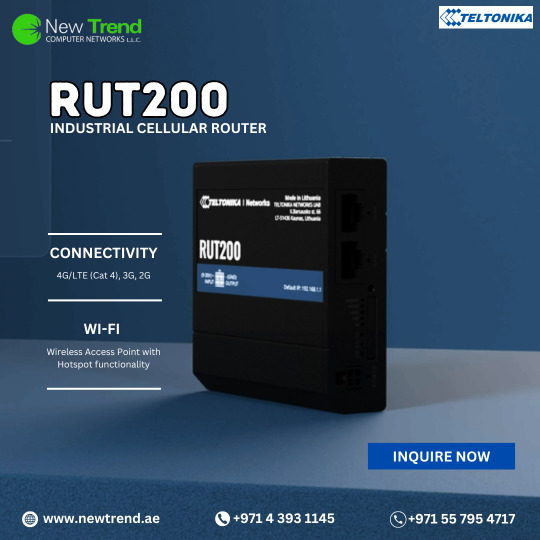#Automation and Transportation
Explore tagged Tumblr posts
Text
Car Ramp Market is Estimated To Witness High Growth Owing To Increasing Demand for Vehicle Maintenance and Repair Services

The global Car Ramp Market is estimated to be valued at US$ 1.17 billion in 2023 and is expected to exhibit a CAGR of 5.9% over the forecast period 2023 to 2030, as highlighted in a new report published by Coherent Market Insights. Market Overview: The Car Ramp Market offers a range of products designed to assist in vehicle maintenance and repair services. Car ramps are widely used by automotive enthusiasts and professionals to safely elevate vehicles for oil changes, inspections, tire rotations, and other maintenance tasks. These ramps provide convenience, stability, and safety compared to traditional methods like jack stands. The increasing need for vehicle maintenance and repair services, along with the growing number of automotive enthusiasts, is driving the demand for car ramps in the market. The market offers a variety of car ramps to cater to different vehicle types, sizes, and weight capacities, providing a suitable solution for various automotive maintenance requirements. Market key trends: One key trend shaping the Car Ramp Market is the increasing demand for innovative and lightweight car ramps. Manufacturers are focusing on developing car ramps with advanced materials, such as heavy-duty polymer compounds and reinforced plastic, to offer enhanced strength, durability, and portability. Lightweight car ramps are not only convenient to handle and transport but also provide efficient functionality, ensuring safe and easy vehicle maintenance. Additionally, these ramps are resistant to corrosion and damage from chemicals and oils, making them ideal for long-term use. The market is witnessing a surge in the adoption of such innovative car ramps, driven by the need for convenient and reliable vehicle maintenance solutions. PEST Analysis: Political: The political factors influencing the car ramp market include government regulations and policies related to automotive safety standards and emissions, which may impact the demand for car ramps. For example, stricter safety regulations may require car owners to have ramps for maintenance and repairs. Economic: The economic factors affecting the car ramp market include disposable income levels, interest rates, and overall economic stability. A growing economy with higher disposable income levels and low-interest rates may lead to increased consumer spending on car maintenance and accessories, including car ramps. Social: The social factors impacting the car ramp market include changing demographics, lifestyle trends, and consumer preferences. As more people prefer to perform DIY car maintenance, the demand for car ramps may increase. Additionally, the increasing number of car enthusiasts and racing enthusiasts may drive the demand for high-quality car ramps. Technological: The technological factors influencing the car ramp market include advancements in material technology, such as the development of lightweight and durable materials for car ramps. Additionally, technological innovations in design and features, such as adjustable heights or foldable ramps, may attract more consumers. Key Takeaways: The global Car Ramp Market Future is expected to witness high growth, exhibiting a CAGR of 5.9% over the forecast period (2023-2030). This growth can be attributed to the increasing number of car owners opting for DIY maintenance and repairs, as well as the rising popularity of car enthusiasts and racing events. In terms of regional analysis, North America is expected to be the fastest-growing and dominating region in the car ramp market. The region has a high concentration of car owners and a strong automotive aftermarket presence, stimulating the demand for car ramps. Key players operating in the car ramp market include RhinoGear, Race Ramps, AutoZone, QuickJack, Discount Ramps, OTC Tools, Black Widow, BendPak, EZ Car Lift, Craftsman, Sunex Tools, RevZilla, Garage Living, Autobahn88, and Torin Big Red. These companies offer a wide range of car ramps with varying features and price points to cater to the diverse needs of consumers in the market.
#Car Ramp Market#Automation and Transportation#Car Ramp Market Growth#Car Ramp Market Analysis#Car Ramp Market Future#Car Ramp Market Forecast#Car Ramp Market Overview#Car Ramp Market Orientation#Car Ramp Market Key Players
0 notes
Text

1937 Buick Special Series 40
Zoot Suit Historic Cruise 2024
A car worthy being a bomb
#Buick#BuickSpecialSeries40#BuickSpecial#1930sCars#WhiteWallTires#CarPhotography#Transportation#Automobile#Automation#Automotive#ClassicCars#Bombitas#ZootSuitCruise#ZootSuitHistoricCruise#AmericanCars#VintageCars
78 notes
·
View notes
Text
it's quite offputting to me when ppl can't disentangle their hatred for capitalism from a hatred for... new technological innovation? the ways in which capitalism has shaped the development of certain technologies has been deeply negative, not to mention that imperialism ensures that new technology is usually produced via extractive relationships with both the planet + ppl in the global south.
but this weird tying of capitalist impact on innovation (+the idea of what is/is not innovation) to hatred of innovation itself (or even more disturbing valorization of "the good old days"/implications that technology is causing social degeneracy) is baffling to me. perhaps it is impossible to achieve specific technologies without unconscionable resource extraction practices, in which case they should not be pursued. but so many ppl act like there is something inherently morally suspect in pursuit of tech such as autonomous vehicles or AI or automation, independent of the material conditions that produced them/that they may produce.
tesla is evil because they exploit ppl for profit + participate in an economy built on the exploitation of the global south + use 'innovation' as a marketing tool to mask serious safety concerns. they're not evil bcuz they want to make vehicles that move on their own. there are actually a great deal of fantastic applications for vehicles which move on their own? equating technology with moral decay is not a radical position; you need a material analysis of why technological innovation has become characterized by harmful practices.
#just saw a truly tragic article abt a death related to self driving car#entire comments section SWAMPED with the implication that any attempts to create self driving cars is INHERENTLY EVIL#like. actually fully automated public transportation would be dead fucking useful#public transit is not currently fully automated + is extremely limited in many cities#im so tired of ppl who need the technology to also be BAD to call out the practices which produced it#things do not need to be black/white for u to understand that exploiting others is morally wrong...
307 notes
·
View notes
Text

aka i’m still reeling from my trip and it ✨s h o w s✨








#mmmmade this so that i can recall certain unphotographed moments from my trip pls stand by~~~~~#also!!!! the buses are so cute and small and cramped during peak hours lmao.#though you have to tell the bus captain your destination before paying your fare…#which is. really different from how we do it here in [insert home country]#we just tap our transport cards when you both board and alight the buses; no bus captain communication necessary!!!#anyways. i just. wish someone told me that the automated fare machines gave change during cash payments#uauauauauauauauaaaaaa g o o g l e w h y d i d y o u f a i l m e#it is suiyoubi my dudes
5 notes
·
View notes
Text
You Don’t Have to Go It Alone
How Freight Revenue Consultants Supports Growth Beyond the Back Office At Freight Revenue Consultants, we’re best known for our back-office support that gives trucking businesses all the benefits of factoring—without the high costs or funding complications. But that’s just part of what we do. Because helping you succeed isn’t just about invoices and collections. It’s about giving you the…

View On WordPress
#1:1 business consulting trucking#automate trucking business#back office efficiency trucking#back office training trucking#freight business expert speaker#freight consulting services#freight industry speakers#freight management consulting#freight process improvement#Freight Revenue Consultants#freight revenue training#improve trucking profitability#logistics business speaker#logistics education services#operational strategy for fleets#small fleet operations coaching#speaker on trucking finance#streamline trucking operations#transportation business strategy#trucking business education#trucking business mentoring#trucking business optimization#trucking systems training#trucking technology education#trucking webinars
0 notes
Text
What Is a Transportation Management System?
To start off, a transportation management system is a software-based platform made to manage, automate, and optimize the transportation of goods. From shipment planning to audit of freight charges, a TMS system provides end-to-end visibility of logistics operations as well as gives control. The modern transportation management systems are generally cloud-based, for scalabilities, flexibilities, and accessibility from anywhere.
The core functions of a transportation management software solution include:
Carrier selection and rate management
Route planning and optimization
Real-time freight tracking
Shipment execution and documentation
Freight billing and invoice auditing
Reporting and analytics
These features help companies of all sizes reduce transportation costs, improve delivery timelines, and gain insights for continuous improvement.
#ai powered port management#artificial intelligence#ports#ai powered automation#management#container#envision#maritime#smartports#ctos#Transport#Management
0 notes
Text
Why Is Continuous Haulage Disrupting Traditional Mining Transport Models

There's a quiet revolution underway in the mining sector. At the heart of this switch is continuous haulage. This contrasts with traditional systems where the material must stop and allow time for the next discharge.
It’s technology that increases efficiency, reduces costs and enhances safety. Several mining companies are now considering other ways to transport the ore. Now the issue is no longer big trucks and long waits.
Mining equipment transport is faster, it’s smarter, and it’s proven as a more reliable approach. The ancient transport models lose to more sites that are based on them. Here’s the why behind the shift and what it means for mining’s future.
Less Time Spent Waiting, Higher Efficiency
In the old days of mining, there was a great deal of stop and start. Trucks wait in lines. Shovels sit idle. These pauses reduce output. Under continuous haulage, there is no material drop in feed.
Conveyor systems or mobile bridge systems populate the floor. This another big time and productivity saver. Mines can now handle more material while using fewer machines.
The fewer handoffs, the fewer breakdowns. There are also fewer slowdowns for workers. And the result is a stronger overall efficiency. And the process is effective in both room-and-pillar and longwall mining formats.
Continuous haulage slips easily into various configurations. And, in the end, operations stay on schedule and the job gets done more quickly than before.
Lower Cost And Efficient Utilization Of Resources
it is expensive to mine them. Fuel, labor and maintenance costs are fast. Historically, what we rely on in haulage in diesel trucks. These trucks are expensive to run and to keep.
In place of rubber-tire equipment, continuous haulage systems are electric or hybrid. They also typically require fewer operators. Fewer cars and less fuel usage means costs drop quickly.
Maintenance is also simplified. There are fewer engines to repair and less worn on tires. And the systems stick around longer with proper care.
That translates into less money spent replacing equipment. That adds up over time, saving companies millions. That additional cash can be put into exploration, tech upgrades, or environmental efforts.
Increased Safety For Workers
Mining was always perilous work. There are continuous risks with trucks and loaders. The probability of collisions rise when maneuvering in close settings. This risk is minimized by continuous haulage.
It allows the removal of most of the large mobile equipment from underground areas. Fewer moving parts, fewer mishaps. Haulage can be monitored remotely by the operators.
This minimizes exposure to dust, noise, and exhaust fumes. In addition, automated systems can respond more quickly to issues. They’re quick to shut down if something goes wrong. That’s an extra layer of protection.
Safe mines mean better morale. Workers feel more secure. Fewer injuries mean reduced insurance costs, too. Safety is no longer some ancillary objective — it’s baked into the system.
Reduced Environmental Impact
The impact of mining on the environment. Diesel trucks spew fuel and emit fumes. Cut stone roads scared the landscape. Hauling solutions for mining offers a cleaner alternative.
Electric conveyors and automatized installations help municipalities to diminish their emissions. They also reduce fuel consumption. Mines that use this tech have a smaller carbon footprint.
Fewer trucks also mean less road building. This is to shield the ecosystems around the site. The continuous haulage method results in control of dust with much more effective control.
It causes less disruption underground. Miners are feeling the heat It’s a tool that is helping them reach new standards.” Not only is it good for business — it’s better for the planet.
Speedier Adoption Of Automation And Digital Platforms
Mining today is all about data and automation. Continuous haulage is a good example. Such systems integrate, at little expense, sensors, cameras, and tracking facilities.
Real-time updates on ore flow are provided to the managers. They are also able to adjust settings from control rooms. Predictive maintenance tools also perform better with steady data.
This minimizes down time and shocks. Tele-remote operation is supported by continuous haulage. It connects to autonomous drills, loaders, and ventilation systems.
Decisions happen faster. Mistakes drop. Teams are more in a planning mode than fix-up mode. It is this tech-forward approach that is the future of mining.
Conclusion
Continuous haulage is not just a new tool — it’s a game changer. It provides faster output, safer conditions for the operators, and lower cost of operation.
Old-fashioned ways of getting the stuff from mine are struggling to keep up with demand. With mines looking for efficiency and sustainability, continuous haulage does both.
Those companies that seize on that change now are getting a powerful edge. The writing is on the wall: progress or get out of the way. The era of bucket wheel and continuous haulage here.
#Mining equipment transport#mining automation systems#custom shaft manufacturing#mining industry career opportunities
0 notes
Text
AI-Based Demand Forecasting for Logistics Optimization
AI-based demand forecasting tools are automating how logistics firms prepare for market fluctuations. These tools process vast amounts of sales data, economic indicators, weather forecasts, and social trends. In 2025, automation enables accurate predictions of product demand, allowing logistics providers to allocate vehicles, staff, and inventory efficiently. This reduces stockouts, overcapacity, and unnecessary transportation. Systems also adapt instantly to new data, keeping forecasts dynamic. By automating demand planning, companies avoid costly misjudgments and maintain a smooth, responsive supply chain throughout the year.
0 notes
Text
Global Vehicle Protection Service Market Is Estimated To Witness High Growth Owing To Increasing Vehicle Ownership

The global Vehicle Protection Service Market is estimated to be valued at US$ 146.01 billion in 2022 and is expected to exhibit a CAGR of 9% over the forecast period of 2023-2030, as highlighted in a new report published by Coherent Market Insights. Market Overview: Vehicle protection services provide extended warranties and other related services for vehicles, ensuring protection against expensive repairs and breakdowns. These services offer coverage for mechanical and electrical failures, as well as roadside assistance, rental car reimbursement, and other benefits. The growing number of vehicles on the road and increasing consumer awareness regarding vehicle maintenance and protection are driving the demand for vehicle protection services. Market Key Trends: One key trend driving the growth of the vehicle protection service market is the increasing number of vehicle ownership. As consumer income levels rise and economies grow, individuals are able to afford and purchase more vehicles. This trend is particularly prominent in developing countries, where rapid urbanization and improving living standards have led to an increase in personal vehicle ownership. For example, in countries like China and India, the rising middle class has significantly contributed to the surge in vehicle sales. This growing vehicle ownership creates a substantial market for vehicle protection services, as owners look for ways to protect their investments and minimize repair costs. PEST Analysis: - Social: Social factors such as changing consumer preferences, lifestyle shifts, and increasing awareness regarding vehicle maintenance and protection drive the demand for vehicle protection services. Consumers are becoming more conscious about protecting their vehicles and avoiding high repair costs. - Technological: Technological advancements in the automotive industry, such as the integration of advanced sensors, telematics, and diagnostic systems, present opportunities for vehicle protection services. These technologies enable better monitoring of vehicle performance, early detection of faults, and proactive maintenance. Key Takeaways: - The global Vehicle Protection Service Market is expected to witness high growth, exhibiting a CAGR of 9% over the forecast period, due to increasing vehicle ownership. As more individuals purchase vehicles, the demand for protection and maintenance services will rise. - North America is anticipated to dominate the vehicle protection service market, followed by Europe and Asia Pacific. The presence of major automobile manufacturers and a high concentration of vehicle owners in these regions contribute to their dominance. - Key players operating in the global vehicle protection service market include Endurance Warranty Services LLC, CarShield, Protect My Car, CarChex, Ally Financial Inc., Toco Warranty, American Auto Shield, Warranty Direct, Royal Administration Services Inc., EasyCare (Automotive Development Group), Autopom!, AA Auto Protection, and CarSure. These players offer various vehicle protection plans and services to cater to the diverse needs of vehicle owners. In conclusion, the growing trend of vehicle ownership and the need for vehicle maintenance and protection are driving the demand for vehicle protection services. Economic growth, technological advancements, and changing consumer preferences further contribute to the market's growth. As the market continues to expand, key players in the industry are offering a range of services to meet the diverse needs of vehicle owners.
#Vehicle Protection Service Market#Automation and Transportation#Vehicle Protection Service Market Growth#Vehicle Protection Service Market Analysis#Vehicle Protection Service Market Forecast#Vehicle Protection Service Market Future#Vehicle Protection Service Market Overview#Vehicle Protection Service Market Key Players
0 notes
Text

1957 Chevrolet 210 Station Wagon
Hoonigan Toy Drive 2021
One of the perfect vehicles to deliver presents in.
#Chevy#Chevrolet#BelAir#ChevyBelAir#ChevroletBelAir#GeneralMotors#TriFive#Tri5#V8Engines#CarPhotography#AmericanCars#StationWagons#1950sCars#ClassicCars#Automotive#Automobile#Automation#Transportation#WhiteWallTires#Hoonigan#HooniganClubDays#Chevy210
65 notes
·
View notes
Text
What Is a Logistics CRM and Why Your Business Needs One
The freight and logistics industry is the backbone of global commerce, enabling the transportation of goods and raw materials across countries, regions, and continents. However, this vital industry is not without its challenges. From maintaining operational efficiency and managing complex supply chains to providing excellent customer service, the logistics sector must continually adapt and innovate to stay competitive. One powerful tool transforming the way companies operate is Customer Relationship Management (CRM) software.
In this blog, we’ll dive into how CRM software is revolutionizing the freight and logistics industry, improving operational efficiency, communication, customer service, and more. Let’s explore why CRM software is now a crucial component of modern freight and logistics operations.
What is CRM Software?
CRM stands for Customer Relationship Management. Traditionally, CRM software has been associated with sales and marketing, providing businesses with a platform to manage customer interactions, store customer data, and streamline communication. However, the benefits of CRM systems extend far beyond customer-facing functions.
In the context of freight and logistics, CRM software integrates various business functions into one unified system, allowing businesses to enhance operational workflows, improve real-time data access, and provide personalized customer experiences. By consolidating information across departments, CRM allows for smarter decision-making and increased efficiency at all levels of the operation.
Challenges in Freight and Logistics Operations
The freight and logistics industry faces several challenges that impact day-to-day operations:
Complex Supply Chains: Freight and logistics companies often have to manage multiple stages of transportation, storage, and distribution, with numerous moving parts across various regions.
Tracking Issues: Without effective tracking mechanisms, businesses may struggle to monitor shipments, resulting in delays and poor customer satisfaction.
Customer Service Bottlenecks: Addressing customer complaints, responding to inquiries, and offering timely updates often becomes overwhelming without an efficient system in place.
Real-Time Data Management: With numerous shipments, inventory, and operational data points to track, it becomes difficult to ensure all information is current and easily accessible.
High Operational Costs: Managing transportation costs, inventory levels, and delivery times can be a challenge, especially in a competitive industry where margins are thin.
CRM software addresses these pain points by providing centralized systems that streamline data sharing, improve customer interactions, and optimize various aspects of logistics operations.
Key Benefits of CRM Software in Freight and Logistics
CRM software offers a range of benefits to businesses in the freight and logistics industry. These benefits result in improved operational performance, greater customer satisfaction, and increased profitability.
1. Improved Customer Relationships
One of the most significant advantages of CRM software is its ability to enhance customer relationships. CRM systems provide logistics companies with deep insights into customer preferences, histories, and pain points. By having a 360-degree view of each customer, logistics companies can:
Personalize Services: CRM software allows businesses to tailor offerings to individual customer needs based on past interactions, making service more relevant and customer-centric.
Increase Proactive Communication: Companies can automate communication with customers to provide real-time updates on their shipments, delivery schedules, and potential delays.
Boost Retention and Loyalty: By building stronger, more personalized connections, businesses can improve customer loyalty, ensuring long-term relationships and repeat business.
2. Better Communication Across Teams
In the fast-paced world of freight and logistics, miscommunication can lead to costly mistakes, delays, and customer dissatisfaction. CRM software improves internal communication by enabling seamless information sharing across departments. Whether it's the operations team, sales department, or customer service agents, everyone can access the same up-to-date information. This results in:
Real-Time Updates: Internal teams stay informed about shipment statuses, delivery times, and any issues that arise.
Collaboration: A shared CRM platform helps all departments work in sync to address issues promptly and ensure that customer expectations are met.
Efficient Decision-Making: With all data centralized, teams can make informed decisions based on real-time insights, ensuring faster resolutions and smoother operations.
3. Efficient Data Management
In logistics, data is abundant, ranging from shipment details and delivery times to inventory levels and customer preferences. Managing all this data manually or across different systems can be cumbersome and prone to errors. CRM software centralizes all this data into a single platform, allowing for:
Centralized Data Repository: All customer and shipment-related information is stored in one place, making it easy for teams to access and manage.
Automation of Tasks: Routine tasks such as tracking shipments, sending out notifications, and generating reports are automated, saving time and reducing the chance of human error.
Enhanced Accuracy: With data in a single, unified system, the chances of errors or outdated information are minimized, resulting in higher levels of operational accuracy.
4. Increased Operational Efficiency
The logistics industry deals with time-sensitive operations, so efficiency is crucial. CRM software helps businesses streamline and optimize their operations by automating tasks, reducing paperwork, and improving coordination. Benefits include:
Faster Order Processing: By automating scheduling, invoicing, and order management, CRM software helps businesses fulfill orders quicker, reducing lead times and improving delivery efficiency.
Improved Documentation Management: With digital storage and tracking capabilities, CRM systems help businesses manage complex documentation such as bills of lading, customs papers, and delivery receipts.
Better Resource Allocation: CRM tools can help optimize the use of resources (e.g., vehicles, warehouses, and personnel) by providing insights into inventory levels, delivery schedules, and capacity needs.
5. Analytics and Reporting
One of the most powerful features of CRM software is its analytics and reporting capabilities. By tracking key performance indicators (KPIs), businesses can gain insights into their operations and identify areas for improvement. Some ways analytics can help include:
Performance Tracking: CRM systems can track metrics like delivery time, order accuracy, and customer satisfaction, helping businesses assess their performance.
Predictive Analytics: Advanced CRM systems use historical data to predict trends, such as when demand spikes or when routes need adjustments.
Customizable Reports: Companies can generate customized reports on various aspects of their operations, allowing decision-makers to stay on top of operational trends and optimize performance.
CRM Software Features Tailored for Freight and Logistics
To further optimize operations, CRM software integrates with several technologies tailored specifically for freight and logistics, such as:
1. Shipment Tracking
CRM software integrates with GPS, IoT devices, and tracking tools to offer real-time updates on the location of shipments. This integration benefits both the company and the customer by:
Providing accurate, up-to-date information on delivery status.
Allowing customers to track their shipments, increasing transparency and trust.
Enabling businesses to monitor the performance of their logistics partners and drivers.
2. Supply Chain Visibility
CRM systems provide end-to-end visibility of the supply chain, allowing companies to track inventory, shipments, and orders in real-time. This transparency helps businesses manage:
Order fulfillment.
Inventory levels.
Supplier performance.
3. Route Optimization
CRM systems can integrate with route-planning tools, which helps businesses optimize delivery routes and schedules. This feature can:
Minimize delays and fuel consumption.
Improve customer satisfaction by providing more accurate delivery windows.
Reduce costs by optimizing vehicle utilization.
4. Automated Customer Support
CRM software can automate customer support processes through self-service portals, chatbots, and automated notifications. This helps:
Provide real-time answers to customer queries.
Reduce the workload on customer service representatives.
Improve customer satisfaction with faster response times.
5. Inventory Management
CRM systems also help businesses manage inventory levels, reducing the risk of stockouts or overstocking. Features include:
Real-time updates on stock availability.
Automated restocking and order management.
Improved visibility across warehouses and storage locations.
Conclusion
CRM software is reshaping the way freight and logistics companies operate. By streamlining communication, enhancing customer relationships, and improving data management, CRM solutions help logistics businesses become more efficient and responsive. Moreover, the ability to track shipments in real-time, optimize routes, and forecast operational trends allows companies to stay ahead of the competition in a fast-paced industry.
As technology continues to advance, the integration of AI, IoT, and predictive analytics within CRM systems will further elevate operational capabilities. For freight and logistics companies, embracing CRM software is no longer just a smart choice—it’s a necessity for long-term success and growth in a highly competitive industry.
Are you ready to take your freight and logistics operations to the next level? Explore CRM solutions designed specifically for your business and see how they can improve your bottom line today!
#Logistics CRM#CRM for freight management#Logistics CRM system#CRM for transportation companies#Freight CRM software#Logistics CRM benefits#Logistics CRM software solutions#CRM for supply chain management#Freight tracking CRM#Automated logistics CRM
0 notes
Text
#supply chain management#supply chain#efficiency#transportation#supplychain#automation#sustainability#innovative#airlines#development#حاويات#عملاءنا#شحن_دولي#تخليص_جمركي#شحن_من_الصين#استيراد#تجارة#تجار
0 notes
Text
Top Employee Transport Nightmares and How AFM Fixes Them with Smart Automation
Managing employee transportation is one of the biggest challenges for corporate organizations. Whether it’s cabs not arriving, last-minute shift changes, compliance issues, or billing disputes, transport managers and employees face daily struggles that affect productivity and safety. Enter AFM (Asti Fleet Management) – a smart, AI-powered employee transport automation platform that removes the chaos by automating rostering, live tracking, employee safety features, compliance, and billing in one seamless solution. Let’s look at common transport nightmares and how AFM turns them into smooth, stress-free experiences. Common Employee Transport Nightmares & AFM’s Solutions Cabs Not Showing Up or Getting Delayed The Nightmare: Employees are stranded because cabs don’t arrive on time, causing frustration and productivity loss. How AFM Solves It: Automated rostering & vehicle allocation for seamless trip planning Live tracking & ETA updates for employees and admins Auto-reallocation of cabs if the assigned vehicle is unavailable
#how to solve employee transport challenges in companies#corporate employee transport management system software#AI-powered employee transport management solution#safe and reliable night shift transport for employees#employee transport automation for IT companies
1 note
·
View note
Text
#lorry loads#freight transportation#trucking logistics#cargo hauling#haulage services#commercial vehicle operations#heavy load delivery#bulk goods shipment#oversize load transport#distribution trucking#logistics india#supply chain management india#freight forwarding india#transportation services india#warehousing india#distribution networks india#import export solutions india#third-party logistics india#cold chain logistics india#online lorry loads services#freight marketplace#truck load boards#digital logistics platform#transport automation#load matching#carrier connectivity#real-time tracking#capacity utilization#transportation management systems#house shifting services online india
0 notes
Text
#embedded solution#automation#transportation#EmbeddedSystems#TechInnovation#IndustrialTech#powerelectronics#powermanagement#powersemiconductor
0 notes
Text

RUT200
INDUSTRIAL CELLULAR ROUTER
Stay connected in the toughest environments with the RUT200 Industrial Cellular Router! 🚀 Designed for automation, transportation, and manufacturing, it ensures reliable, mission-critical connectivity in demanding conditions. Compact, durable, and powerful—because your network deserves the best. 🌐
For more information, Visit: https://www.newtrend.ae/ Live chat: +971 507542792
#RUT200#IndustrialRouter#Connectivity#Automation#Transportation#Manufacturing#MissionCritical#ReliableNetwork#IndustrialNetworking#TechSolutions#NetworkingExcellence#DurableRouter#PowerfulConnectivity#NewTrend
0 notes